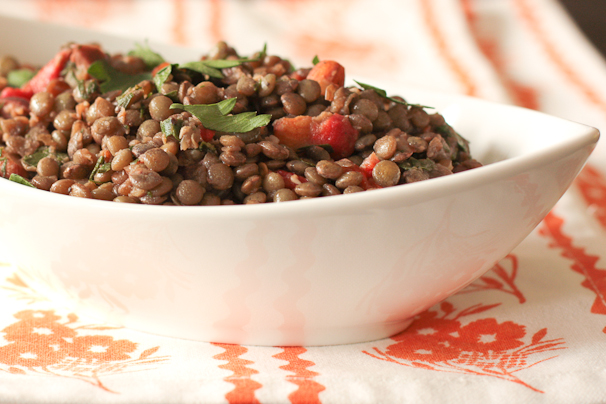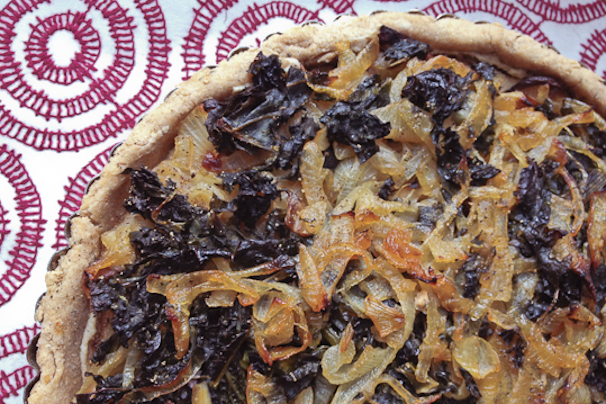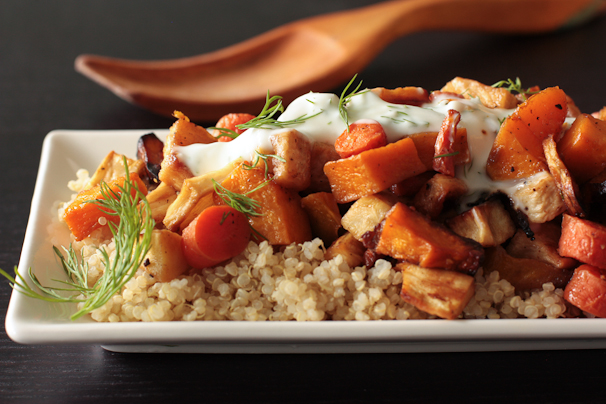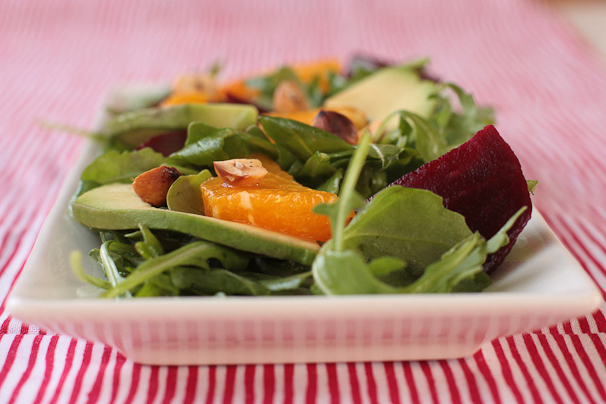Chipotle & chocolate chili
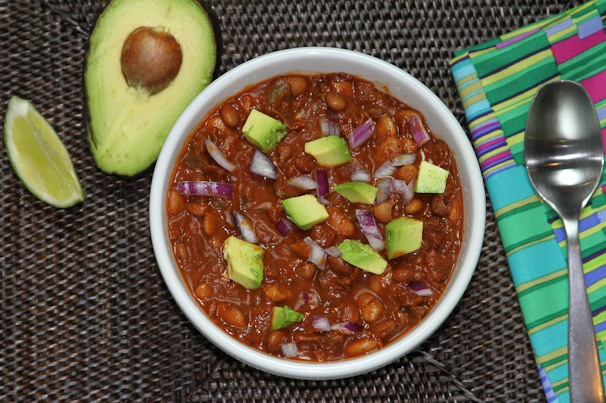
I’m constantly refining my vegetarian chili recipe, in search of the ultimate version. I love this one to death, but it will probably not be the last chili you see from me!
At first I thought this recipe might be too much flavor for your brain to process, with four kinds of chile powder, chipotle vegetarian sausages, chocolate stout beer and bittersweet chocolate. But when I served it recently at a potluck for gojee food bloggers, it drew raves. In a stroke or serendipity, someone set a rice cooker filled with brown rice next to the chili. While I’m usually more of a chili purist, it turns out that rice was the perfect accompaniment. A dollop of fat-free sour cream or yogurt is essential, too (use soy versions for a vegan dish.)
More than one potluck attendee – and mind you, these were some seriously great food bloggers – said “If no one had told me this chili was vegetarian, I would have never known.” That’s when I knew I had a winner on my hands.
When you make this chili, be sure to hunt down Field Roast chipotle sausages; other brands of vegetarian sausage don’t have the same chewy texture (and no, I’m on on Field Roast’s payroll!). They are frustratingly high in sodium, but here I use only two links in a large batch, so not to worry.
The chili has an edge of bitterness, which I quite like. But if you want to tone that aspect down, use a lighter beer instead of chocolate stout, and eliminate the espresso powder. Trust me, it will still be a far cry from your average bland and tomato-y vegetarian chili.
1¾ cups dried pinto (or Sangre de Toro or Rio Zape) beans, soaked overnight or quick-soaked
2 links Field Roast chipotle vegetarian sausages, crumbled
1 teaspoon + 1 tablespoon extra virgin olive oil or organic canola oil
1 large green bell pepper diced
1 large yellow or white onion, diced
3 large cloves garlic, minced
2 tablespoons ancho chile powder
2 tablespoons hot or mild New Mexico chile powder
2 teaspoons chipotle powder
½ teaspoon cayenne pepper
1 tablespoon ground cumin
2 teaspoons ground coriander
1½ teaspoons dried Mexican oregano
3/4 teaspoon salt
½ teaspoon freshly ground black pepper
3 tablespoons tomato paste
1 26-oz carton Pomi chopped tomatoes or Bionaturae chopped tomatoes*
12-ounce bottle beer, such as chocolate stout
1 tablespoon instant espresso powder
2 teaspoons molasses (or substitute brown sugar)
1½ ounces bittersweet chocolate, chopped
1 tablespoon freshly-squeezed lime juice
Cooked brown rice (optional)
Toppings: Avocado, red onions, cilantro, yogurt or sour cream (soy or regular)
Drain the soaked beans, then place in a large saucepan and cover well with fresh cold water. Bring to a boil, reduce heat and simmer until tender, about 1 hour, adding water as necessary. Let them sit until you’re ready to use them, then drain, reserving the cooking liquid.
Heat a teaspoon of oil on medium-high heat in a large, heavy-bottomed pot. Add the crumbled vegetarian sausages and cook for 3 minutes, stirring a few times (it will stick; it’s ok). Remove to a plate.
Heat the remaining oil on medium heat in the same pot. Add the onions, garlic and peppers. Cook for 8 minutes, stirring frequently and scraping the bottom of the pot to incorporate the sausage remnants that stuck to the pan. Add the tomato paste, chili powders, cumin, coriander, oregano, salt and pepper. Cook for 3-4 minutes, stirring frequently.
Add the tomatoes, beer, espresso powder and brown sugar or molasses. Bring to a boil, then reduce the heat and simmer for 15 minutes. Add the reserved vegetarian sausage and beans and simmer very gently for 10 minutes. If the chili seems much too thick, add a little of the bean cooking liquid. Stir in chocolate and lime and turn off the heat.
Serve on cooked brown rice with your toppings of choice, or refrigerate and serve the next day, when it’s even better.
*BPA-free brands
Serves 6-8


